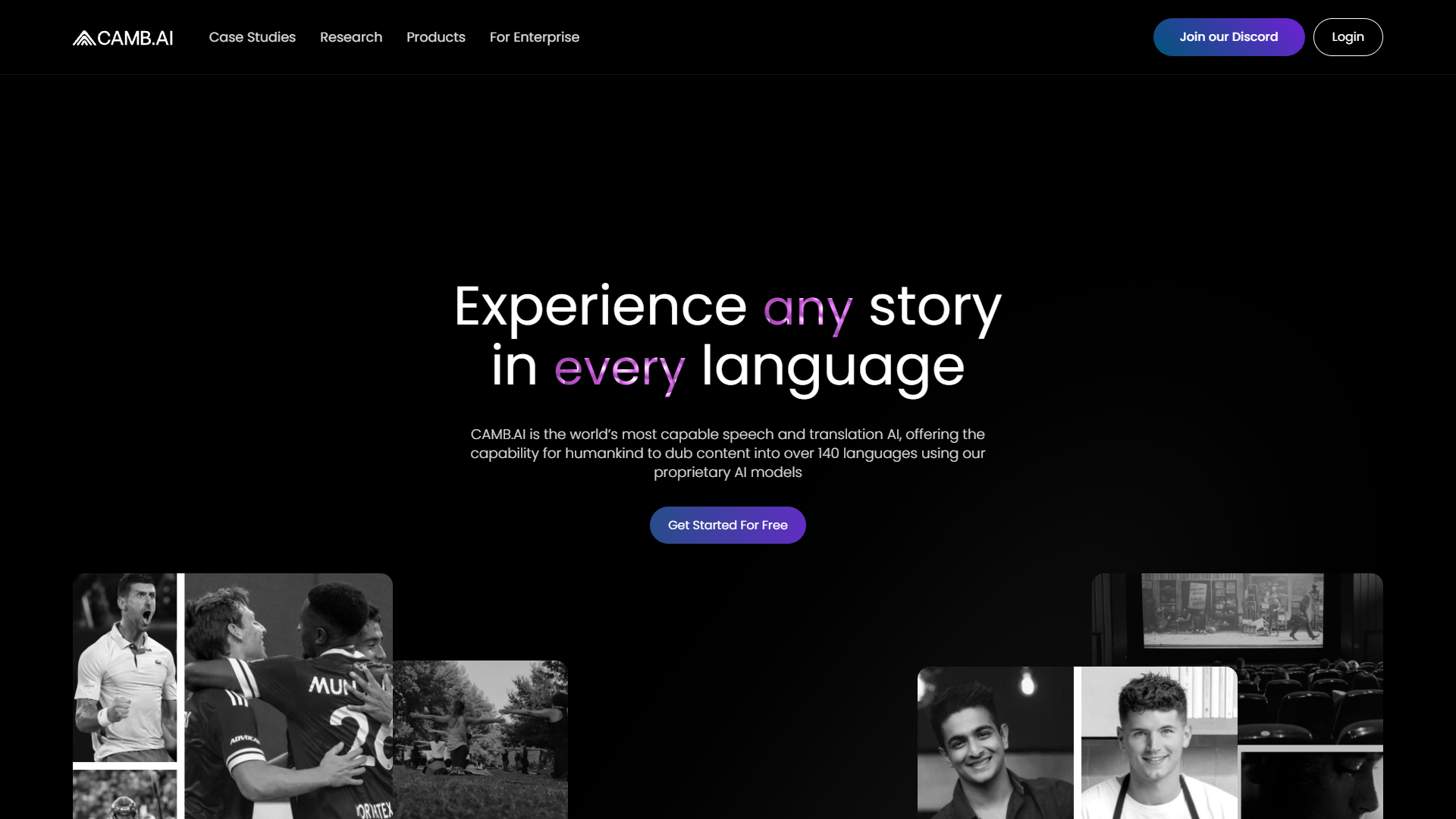Overview
Camb.ai is a revolutionary AI-powered tool designed to transform the way content is dubbed and translated across the globe. With the capability to support over 140 languages, Camb.ai leverages proprietary AI models, MARS and BOLI, to deliver authentic and emotionally resonant translations. This technology has been recognized in prestigious outlets such as Forbes and The Hollywood Reporter for its innovative approach to language translation, including its notable achievement in dubbing the first Arabic film into Mandarin.
The suite of products offered by Camb.ai includes Studio, which streamlines the video dubbing process, DubStream for real-time translation and dubbing of live broadcasts, and Dubsy, a convenient Chrome extension that enables easy translation and dubbing of YouTube videos. Additionally, Camb.ai provides robust APIs that facilitate seamless integration with existing systems, enhancing localization efforts and expanding global reach.
This tool has proven indispensable in various sectors, from entertainment, where it helped dub films and scale content for creators like Nick DiGiovanni and BeerBiceps, to sports, where it partnered with Major League Soccer to offer multilingual live streaming. Camb.ai continues to set new standards in AI-driven content translation, making it easier for creators and broadcasters to connect with diverse audiences worldwide.
Key features
- Studio automation: Automates the dubbing process for video content, enabling seamless language translation and voice synchronization using advanced AI models.
- Real-time DubStream: Offers live translation and dubbing for events like sports, making content accessible in multiple languages instantly and enhancing viewer engagement.
- Dubsy Chrome extension: Allows users to translate and dub YouTube videos effortlessly, expanding the reach of video content to a global audience without language barriers.
- Advanced AI models: Utilizes proprietary AI models, MARS and BOLI, to ensure that dubbed content maintains authentic emotions and cultural nuances in over 140 languages.
- Comprehensive APIs: Provides robust APIs for voice cloning, text-to-speech conversion, and transcription, facilitating easy integration into existing systems and workflows.
- Privacy and support: Ensures user privacy with secure handling of data and offers extensive support through FAQs and direct contact options for troubleshooting and inquiries.
 Pros
Pros
- Scalable deployment: Easily scales to accommodate projects of any size, from small independent videos to large-scale multinational broadcasts, ensuring consistent quality and performance.
- Customizable voice profiles: Users can create and customize voice profiles to match specific characters or branding needs, enhancing the personalization of dubbed content.
- Seamless integration: Integrates smoothly with various video editing software, streamlining the post-production process and reducing the time to market for multilingual content.
- Cost-effective solution: Reduces the need for extensive multilingual voice actor casts, thereby lowering production costs and making multilingual projects more financially accessible.
- Continuous updates: Regularly updated to include the latest advancements in AI and machine learning, ensuring the tool remains at the cutting edge of technology.
 Cons
Cons
- Dependency on connectivity: Requires stable and high-speed internet connections to perform real-time translation and dubbing without delays or interruptions.
- Limited offline functionality: Most features, including live dubbing and video translation, are not available without an active internet connection, limiting usage in remote areas.
- Potential AI biases: AI models like MARS and BOLI may inadvertently incorporate biases, affecting the accuracy and neutrality of translations and dubbed content.
- Complexity for beginners: The comprehensive nature of APIs and advanced settings might be overwhelming for users with limited technical expertise.
- Resource intensity: Advanced AI processing demands significant computational power, potentially limiting performance on less capable hardware.











